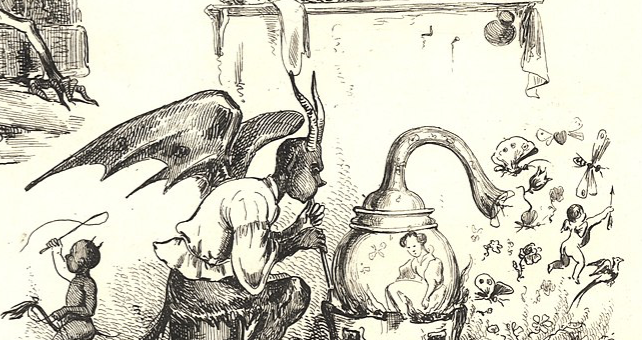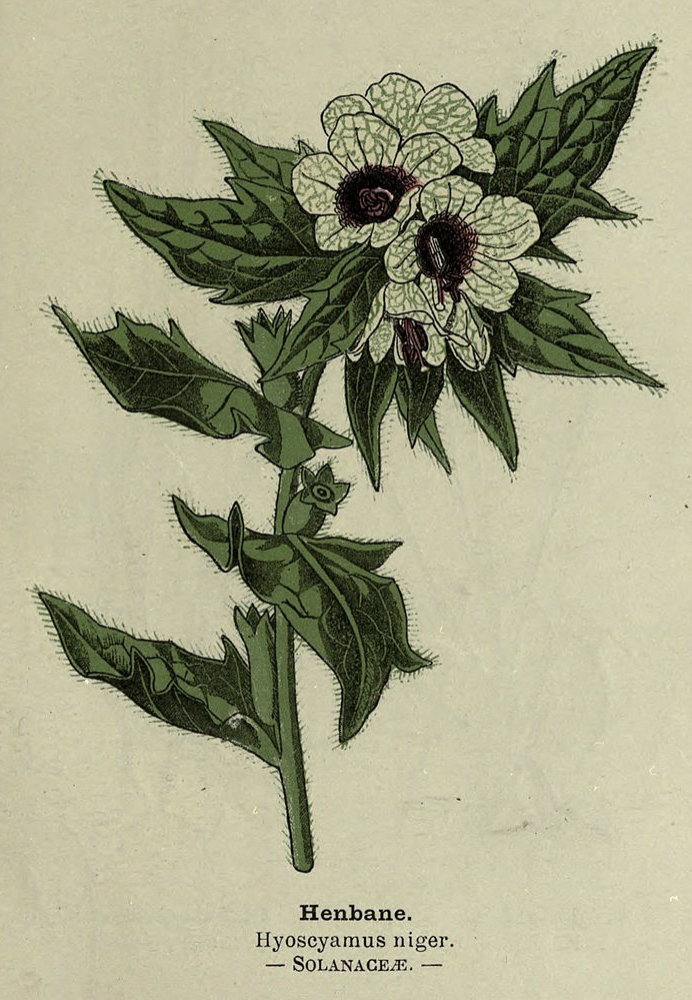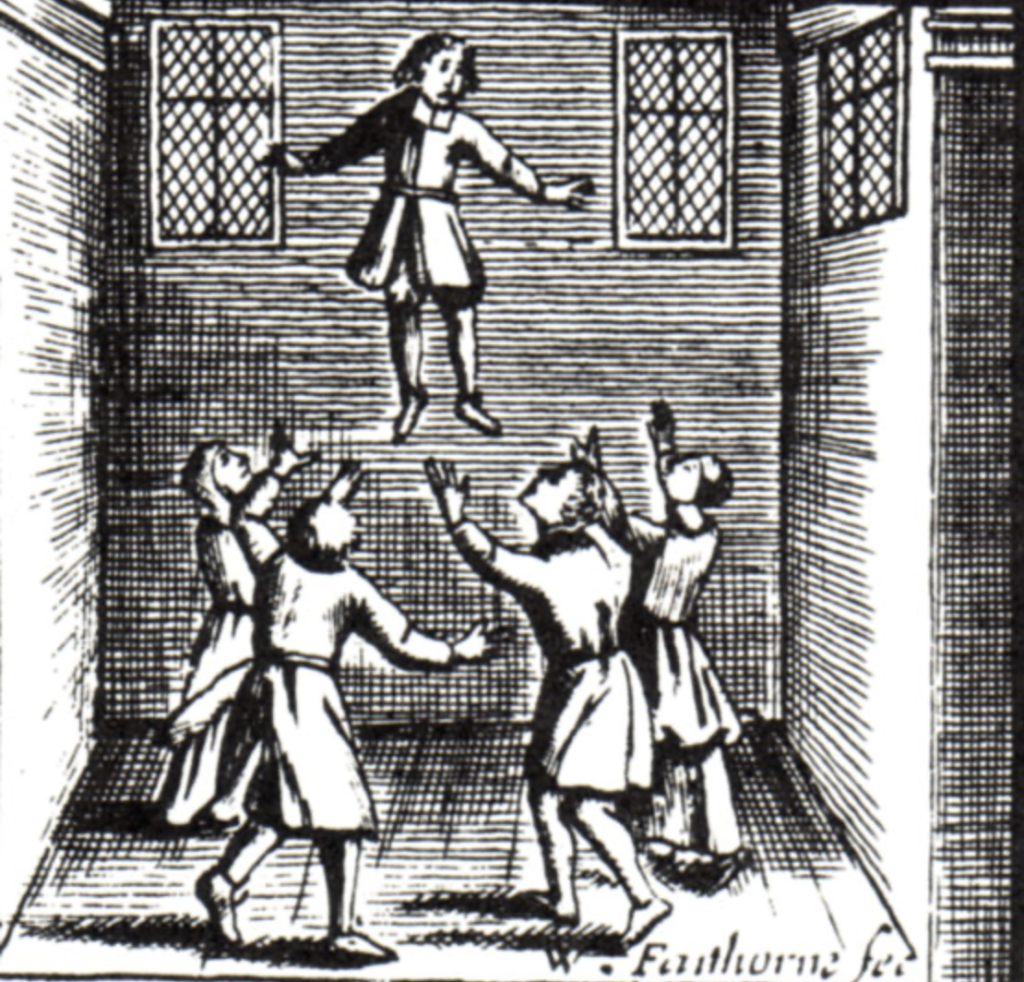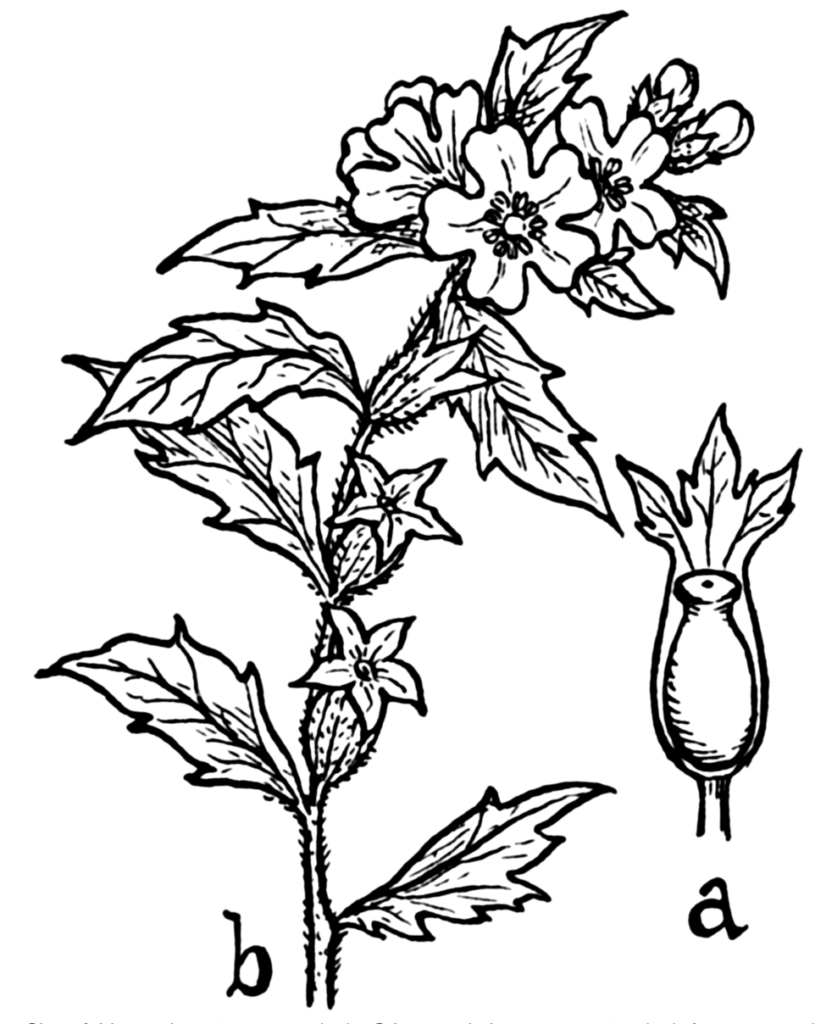
Henbane (Hyoscyamus niger) is a herbaceous annual plant that has been used for centuries in witchcraft and medicine.
The plant is native to Europe but can also be found in parts of Asia and North Africa. The plant grows to about 60 cm and has hairy, green leaves and purple flowers. Bees pollinate the flowers, and the fruits that develop are small, black, and poisonous.
The leaves and flowers of the henbane plant contain several poisonous compounds, including hyoscyamine, scopolamine, and atropine. These compounds make the plant toxic, and they are also responsible for its psychoactive effects. For example, the compounds in henbane can cause hallucinations, confusion, and delirium.

Henbane in Witchcraft
Henbane has been used in witchcraft for centuries for various purposes, the most popular of which is the induction of a trance state. Other applications include the use of henbane as an ingredient in flying ointment and a method of relieving pain.
Henbane is a powerful hallucinogen that can cause a trance state in those who ingest it. The herb was used by the ancient Greeks and Romans to induce visions and to communicate with the dead. In the Middle Ages, henbane was often used in black magic rituals, and it was thought to be able to summon demons.
The active ingredient in henbane is hyoscyamine, which is a potent anticholinergic. This compound blocks the action of the neurotransmitter acetylcholine, which is responsible for sending messages between the brain and the muscles. When hyoscyamine is ingested, it causes the muscles to relax and the user to experience altered states of consciousness.
Henbane was also used in love potions and was considered an aphrodisiac, in spite of the fact that the entire plant is poisonous. Its effects would be closer to a date-rape drug than something that actually causes another person to fall in love with you.

Flying Ointment
Flying ointment, also known as witches’ ointment, is a topical application used by witches and other folk healers to facilitate astral projection and other supernatural activities. The ointment is said to contain various ingredients, including hallucinogenic plants like datura and deadly nightshade, as well as animal fats and blood.
The history of flying ointment is shrouded in mystery, and its effects are still not fully understood. However, it is believed that the ointment can cause intense hallucinations, which may be why it was historically used for supernatural purposes. It is also said to be analgesic and can cause a sense of weightlessness, which may explain why it was used for astral projection.
In The Encyclopedia of Witchcraft and Demonology (Rossell Hope Robbins) we read:
“In 1560 Giambattista Porta related how a supposed witch promised to bring him information from a distant town. She shut herself in a room, and Porta, peeping through a chink, saw her disrobe, rub herself with ointment, and pass into a trance. He entered the room, tried to rouse her, and finally beat her black and blue, all the time without waking her. Later, the witch told of traveling over seas and mountains and of other impossibilities. Even when shown her bruises, the woman still maintained she had actually flown.”

Case of Henbane Poisoning in 1911
A report published in 1911 gives us the effects of henbane poisoning after roughly 30 people in Germany accidentally ate horseradish with chopped henbane root:
“A Russian lady, who had spoken German fluently forgot that language completely; an English woman wanted to teach everybody her native tongue; one woman thought herself a living statue and would not move from one position; another insisted on crawling about the floor in search for a valuable object she believed she had lost; several women could not stop laughing; a servant placed 25 hot water bottles in her own bed instead of in those of the visitors.
“When the physician was called in haste one of the women guests greeted him as an old friend and would not leave him. A man busied himself in counting imaginary banknotes which he snatched from out of the air, while another man set out to find a chemist, lost his memory and proceeded to buy a lot of useless articles from various shops. The proprietor of the establishment carried a tureen of soup to his bedroom and emptied the liquid on the pillows.” [Source: Santa Fe new Mexican. (Santa Fe, N.M.), 06 Feb. 1911.]
All in all, it was one heck of a trip.

Not a Good Idea
Although flying ointment is not commonly used today, it still has the potential to cause serious harm. Its ingredients can be toxic, and its effects are unpredictable. Therefore, testing out various flying ointment recipes is not recommended and can, in fact, be deadly.

